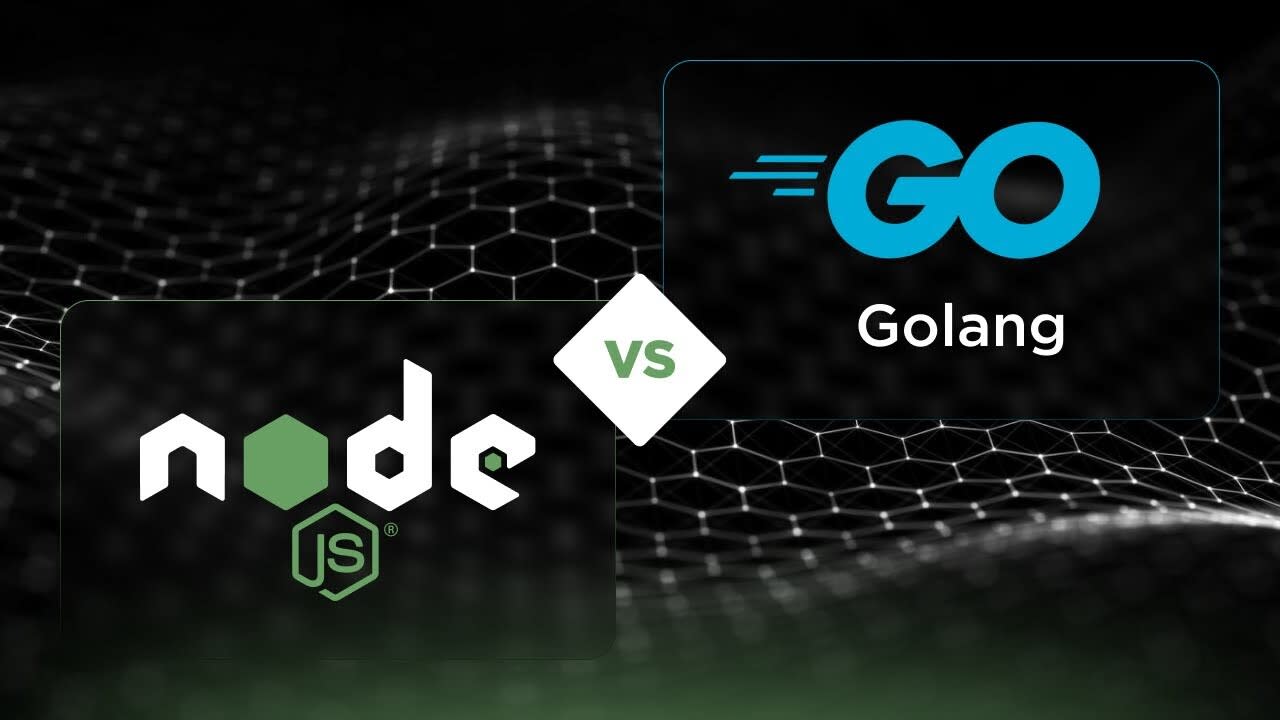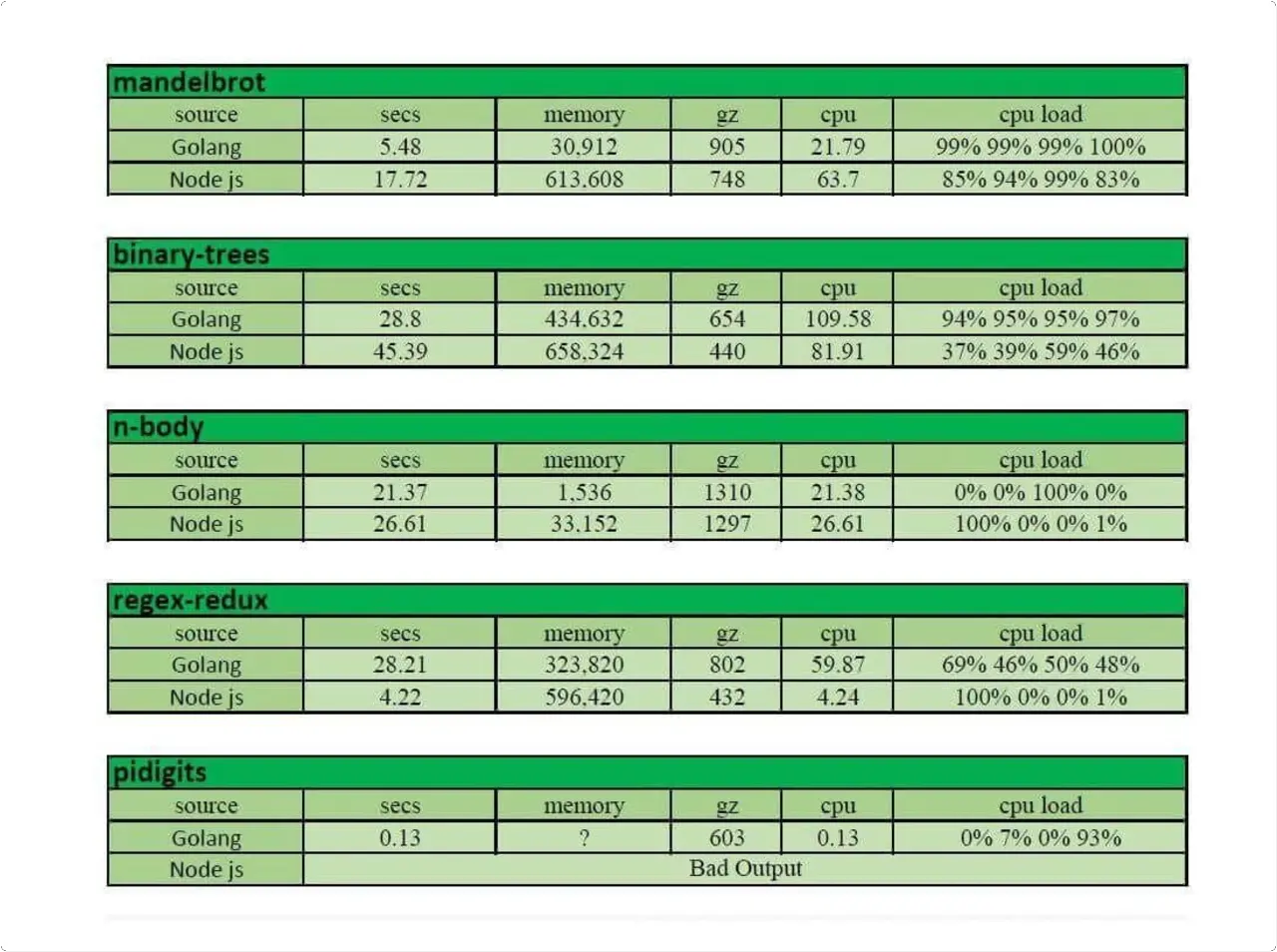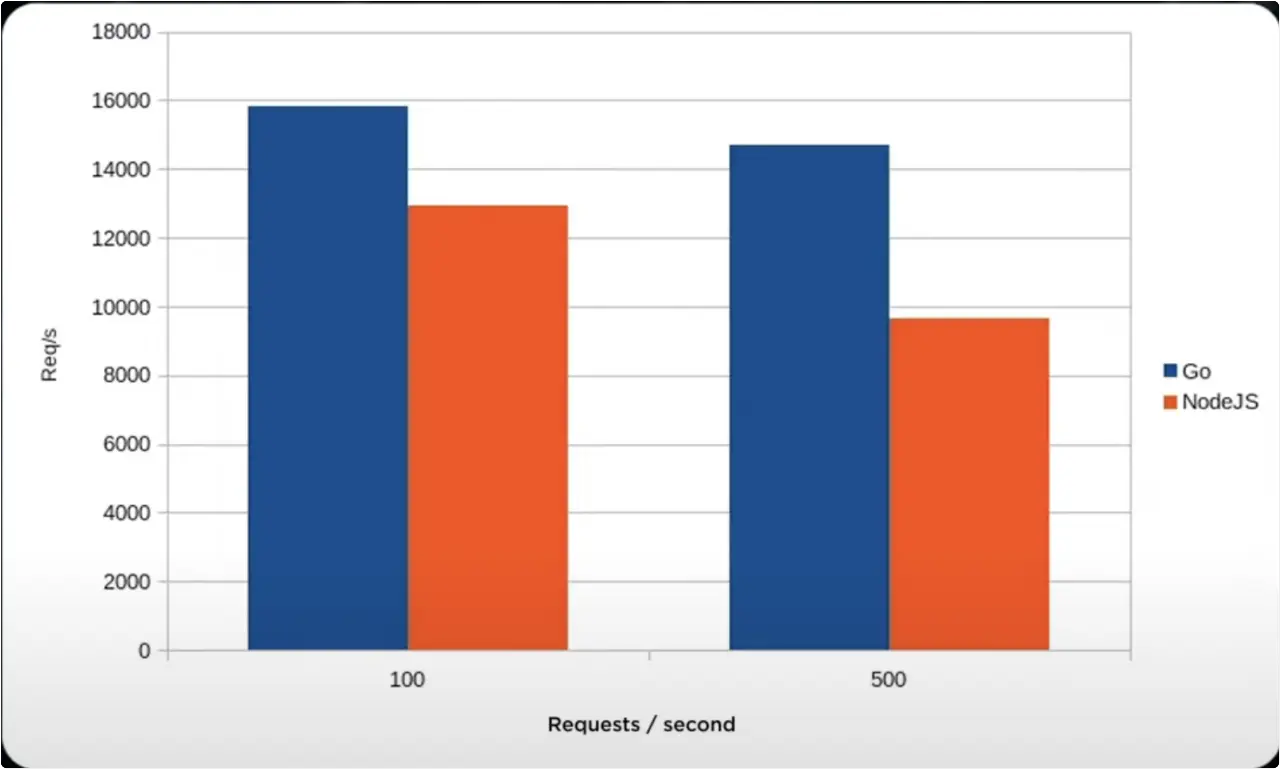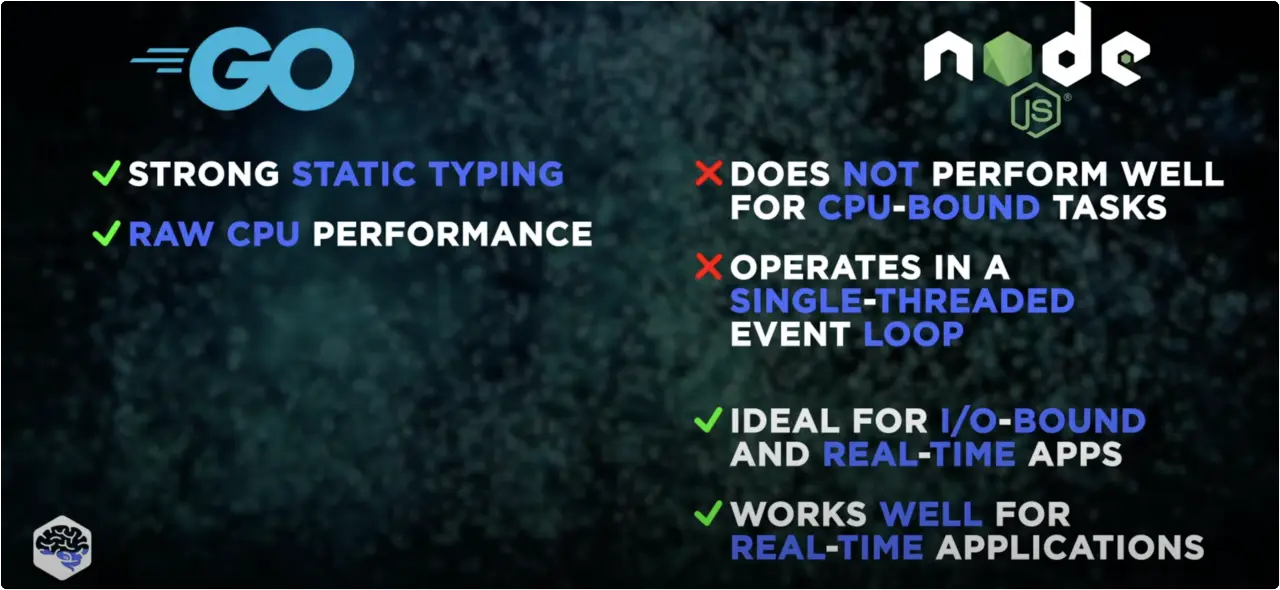Choosing Between Golang and Node.js for Your Next Project
- With Code Example
- February 18, 2024

Series - golang vs

As a software developer, I’m always looking for the fastest, most efficient tools to build applications. Two technologies I consider top-notch in terms of speed and handling complex tasks are Golang and Node.js. Both have excellent reputations when it comes to performance. But which one is faster - Golang or Node? I decided to dig into some hardcore benchmark tests comparing the two. By analyzing the nitty-gritty results, I aimed to see whether Golang or Node comes out on top in terms of raw speed. The data would reveal if one has a clear advantage for developing high-performance apps.
Table of Contents
Golang Tutorial for Beginners a Guide
Introduction
Golang and Node.js have gained significant traction in recent years, each boasting its own set of strengths and advantages. Golang, also known as Go, is a statically typed, compiled programming language developed by Google. It’s lauded for its simplicity, concurrency support via goroutines, and blazing-fast performance. On the other hand, Node.js is an event-driven, non-blocking I/O platform built on Chrome’s V8 JavaScript engine. It’s highly regarded for its asynchronous programming model, extensive package ecosystem via npm, and rapid development capabilities.

Benchmarking Methodology
Before diving into the benchmarking results, it’s crucial to establish a standardized methodology to ensure fair and accurate comparisons. In our benchmarking tests, we’ll focus on common performance metrics such as response time, throughput, and resource utilization. The benchmarking environment will consist of identical hardware specifications and configurations for both Golang and Node.js applications. Additionally, we’ll employ reputable benchmarking tools and frameworks to conduct our tests, ensuring reliability and consistency across all experiments.

Response Time Comparison
One of the key metrics in evaluating the performance of web servers is response time, which measures the duration between sending a request and receiving a response. In our benchmarking tests, we’ll deploy identical web server applications written in Golang and Node.js, each serving simple HTTP requests with minimal processing overhead. By simulating varying levels of concurrent client connections and analyzing the corresponding response times, we can assess how Golang and Node.js perform under real-world workload scenarios.
// Node.js HTTP server
const http = require('http');
const server = http.createServer((req, res) => {
res.writeHead(200);
res.end('Hello, World!');
});
server.listen(3000);

// Golang HTTP server
package main
import (
"net/http"
)
func handler(w http.ResponseWriter, r *http.Request) {
w.Write([]byte("Hello, World!"))
}
func main() {
http.HandleFunc("/", handler)
http.ListenAndServe(":3000", nil)
}
Throughput Analysis
Alongside response time, throughput is another critical performance metric that measures the rate at which a system can process incoming requests. Higher throughput values indicate a greater capacity for handling concurrent connections and delivering responses promptly. To compare the throughput of Golang vs Node.js applications, we’ll ramp up the number of concurrent client requests and monitor how each platform scales in terms of request processing capabilities.
Resource Utilization
In addition to response time and throughput, it’s essential to assess the resource utilization of Golang and Node.js applications under load. This includes monitoring CPU usage, memory consumption, and network activity to identify any potential bottlenecks or inefficiencies. By examining resource utilization metrics, we can gain insights into the overall efficiency and scalability of each platform, helping developers make informed decisions when selecting the optimal technology stack for their projects.
CPU Usage:
- Golang compiles down to native machine code, making it very CPU efficient. Benchmarks show Golang consistently utilizes CPU resources better than Node.js.
- Node.js is single-threaded and relies on asynchronous I/O calls. This can lead to CPU underutilization and added overhead.
Memory Usage:
- Golang has lower memory usage compared to Node.js due to its static typing and compiled nature. There is less metadata needed at runtime.
- Node.js depends on dynamic typing and the V8 JavaScript engine, requiring more memory for type information and the heap.
Threading Model:
- Golang uses lightweight threads (goroutines) for concurrency. This makes multi-threaded code and parallelism easy.
- Node.js uses a single-threaded, non-blocking I/O model. Parallelism has to be coded explicitly using Worker Threads.
Scaling:
- Golang scales very well horizontally thanks to cheap goroutine threading. It can handle massive concurrency needs.
- Node.js scales well vertically on a single machine but can encounter bottlenecks when scaling out due to the single thread.
Concurrency Performance

One of the standout features of Golang is its native support for concurrency via lightweight goroutines and channels. This enables Golang applications to efficiently handle thousands of concurrent tasks with minimal overhead, making it well-suited for building highly concurrent systems such as web servers, microservices, and distributed applications. In contrast, Node.js relies on an event-driven, non-blocking I/O model to achieve concurrency, leveraging asynchronous functions and event loops. We’ll compare the concurrency performance of Golang vs Node.js by stress-testing both platforms with a high volume of concurrent tasks and evaluating their responsiveness and scalability.
Conclusion
In conclusion, the benchmarking results paint a clear picture of the performance differences between Golang and Node.js. While both platforms excel in their own right, Golang demonstrates superior performance in terms of raw speed, concurrency, and resource efficiency. Its compiled nature, lightweight goroutines, and efficient runtime make it a compelling choice for high-performance applications requiring fast response times and scalable concurrency. On the other hand, Node.js offers unparalleled developer productivity, extensive ecosystem support, and seamless integration with JavaScript front-end frameworks. Ultimately, the choice between Golang and Node.js depends on the specific requirements and priorities of your project, whether it’s maximizing performance, leveraging existing JavaScript expertise, or optimizing for developer efficiency.
FAQs
Node.js is a JavaScript runtime built on Chrome’s V8 engine. It uses an event-driven, non-blocking I/O model ideal for scalable network applications. Golang is an open-source programming language developed by Google. It uses static typing, concurrency features like goroutines, and compiles to standalone machine code.
Node.js is commonly used for building fast and scalable network applications like web servers, real-time services, and API backends. Its ecosystem makes Node.js popular for web development. Golang is used for building high-performance backends, services, and command line tools. Its speed and concurrency also make Golang suitable for microservices and cloud-native development.
- Great for I/O bound applications due to its asynchronous, event-driven model
- Very fast for real-time services and API backends
- Simple concurrency model based on callbacks/promises
- Huge ecosystem of open-source libraries and tools
- Excellent performance thanks to static typing and compiled nature
- Built-in concurrency features like goroutines and channels
- Produces standalone executable binaries
- Excellent for CPU-bound applications and microservices
- Simple and clean syntax that is easy to learn
Node.js is a great choice when building scalable, I/O-intensive web services. Its ecosystem and JavaScript language skills make Node.js a great choice for web development.
Golang shines for CPU-intensive tasks like data processing, algorithms, and microservices. Its performance, concurrency support, and small memory footprint make Golang a great choice for backend systems and CLI tools.
Yes, Golang and Node.js can complement each other in a technology stack. For example, using Node.js for the web layer and Golang for CPU intensive backend services and utilities. The two languages can interoperate via REST APIs and protocol buffers.







